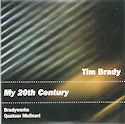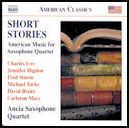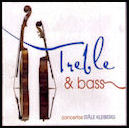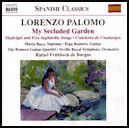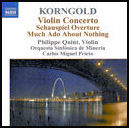"Einojuhani Rautavaara - 12 Concertos" Various artists; Helsinki Philharmonic
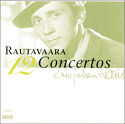 Einojuhani Rautavaara - 12 Concertos
Einojuhani Rautavaara - 12 Concertos
Various artists; Helsinki Philharmonic
Orchestra; Leif Segerstam
Ondine ODE 1156-2Q
Finland’s enterprising Ondine label has faithfully recorded the music of the eminent composer Einojuhani Rautavaara (born 1928 in Helsinki) for decades and has assembled from their extensive catalogue of his works this immensely valuable collectors’ edition of four discs documenting a dozen concertos composed by him over the past 30 years. All of the recordings were supervised by the composer and feature outstanding soloists accompanied in most cases by the Helsinki Philharmonic Orchestra under the direction of the redoubtable Leif Segerstam.
Rautavaara’s extant series of concertos (though a recent percussion concerto has yet to be recorded) begins with the 1968 Cello Concerto, heard here in a performance by Marko Ylönen, and extends to the lengthy 2001 Clarinet Concerto in a masterful performance by its dedicatee Richard Stoltzman. My personal favourites include the stunningly evocative 1972 Concerto for Birds and Orchestra “Cantus Arcticus”, which amalgamates the composer’s own field recordings of the waterfowl of northern Finland in a halo of shimmering orchestral sound, and two compositions from 1977, the kaleidoscopic scoring and stream-of-consciousness impunity of the single movement Concerto for Organ, Brass Quintet and Symphonic Winds with Kari Jussila the soloist and Elmar Oliveira’s affectionate account of the capricious mood swings of the Violin Concerto. The collection also includes a lively Flute Concerto with Patrick Gallois, a succinct Ballad and prolix Concerto for harp, and an uncanny Concerto for Double Bass.
Rautavaara’s three Piano Concertos, the first two performed by Ralf Gothoni with the Leipzig and Bavarian Radio Symphony orchestras and the third performed and conducted from the keyboard by Vladimir Ashkenazy in Helsinki, provide an excellent overview of the composer’s stylistic evolution over the decades. Considered by many as one of the greatest musical figures in Finland after Jean Sibelius, Rautavaara’s compositions are infused by a rich palette of expression that consistently reward the listener while remaining admirably contemporary in their approach. All the selections feature excellent production values and constitute a loving tribute to this important composer’s considerable achievements.


